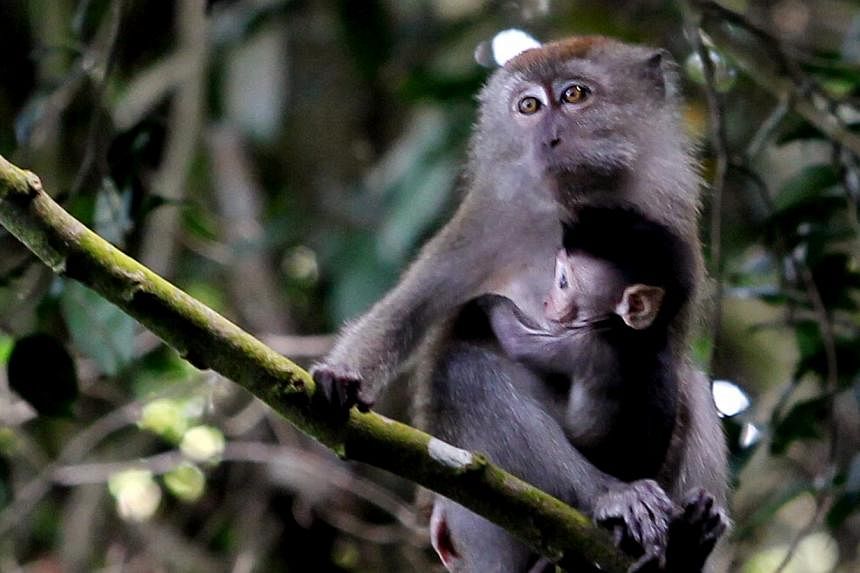Where exactly do monkeys in Singapore go during the day, and how can this information be used to manage them?
The National Parks Board (NParks) intends to find out soon by starting a one-year project to track up to 30 of the long-tailed macaques.
Slated to start next year, it will use collars with global positioning system (GPS) to study the monkeys' ranges and movements in areas such as the Central Catchment Nature Reserve.
When asked, NParks said up to 30 of the monkeys from different groups will have collars put on them to understand the groups' movements, "as it is not practical to collar all monkeys".
The collars will have a releasing mechanism that can be triggered remotely, although monkey researchers said there should be a back-up plan to remove them in case the mechanism fails.
Asked how the information could be used to address human-macaque conflicts here, NParks only said that "the study will help guide the development of long-term management strategies for the macaques". But monkey researchers said the authorities could use the data to keep the animals away from homes more effectively, and hopefully without having to cull them.
In August, Ms Sim Ann, an MP for Holland- Bukit Timah GRC, said the monkey issue was "vexing" as many residents complain about the animals, and yet others are upset about the culling.
The Agri-Food and Veterinary Authority (AVA) killed about 570 long-tailed macaques last year, and another 100 as of mid-August this year.
This was a third of the estimated islandwide population of around 2,000 monkeys.
The culling appeared to have been effective: The AVA said there were 420 monkey-related complaints this year as of mid-August, compared with 1,860 last year and 920 in 2012.
But the researchers said the data could be used, for example, to show residents how much time the monkeys actually spend near their properties, in cases where they may wrongly believe the monkeys are there all the time.
Ms Amy Klegarth, a doctoral candidate at the University of Notre Dame in the United States who has tracked the monkeys here using GPS collars, added that the information could show the authorities which human homes the animals may rely on for food. "If the monkeys spend a lot of time at a particular apartment complex, it's likely because someone there is feeding them reliably, or the rubbish there is poorly sequestered," she said.
The monkeys' movements may also change at different times, for instance during the dry and wet seasons, and based on the fruiting patterns of plants in their diet.
More knowledge about these seasonal changes could help the authorities to refine strategies to keep them away from homes, the researchers said.
The Animal Concerns Research and Education Society (Acres) has suggested that the authorities use trained guards to shoo the monkeys away from residential areas. The researchers said this method would be more effective if the authorities could more precisely predict monkeys' movements.
Said Acres macaque rescue team and campaigns executive Sabrina Jabbar: "Collaring one monkey per group would enable us or park rangers to easily locate the groups in conflict zones, to quickly respond to complaints."

